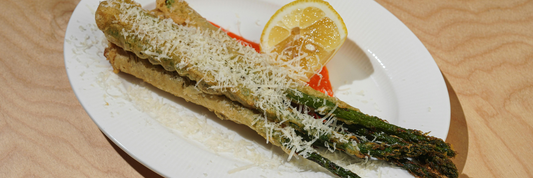In the fast-paced world of food service, efficiency is key. But even the most seasoned chefs can encounter a frustrating foe: the stuck jar lid. Whether it's a jar of pickles during a lunch rush or a container of spices needed for a signature dish, a stubborn lid can slow down your entire operation. In today's article, we will guide you on how to open a stuck jar.
- How to Measure The Jar Lids? Guide to Buying Canning Jar Lid
- How to Sterilize Jars Properly? Step By Step Guide
How to Open Glass Jar With Metal Lid: Increase Grip
Opening stubborn jar lids can be a frustrating hurdle in a fast-paced kitchen environment. Here are three effective “enhanced grip" to empower your staff and ensure smooth operation:
Here are two effective methods to increase grip:
- The Rubber Band Technique:
- Maintain a readily available supply of standard rubber bands in your kitchen.
- Securely wrap one rubber band around the lid of the jar. The rubber band creates a textured surface that significantly increases friction, making it easier to twist the lid open, even with wet or greasy hands.
- The Dishcloth/Paper Towel Method:
- Train your staff to keep clean dishcloths or paper towels within easy reach at all times.
- Before attempting to open a jar, cover the lid with a dry cloth. This provides a non-slip surface, enhancing grip and making it easier to twist the lid, even for individuals with limited hand strength.

How to Open a Stuck Jar: The Tap Technique
The "Tap Technique" is a surprisingly effective and often overlooked method for conquering stubborn jar lids. While seemingly simple, it utilizes the power of gentle percussion to dislodge the seal and make opening the jar significantly easier. Here's a breakdown of the technique:
- Selecting the Right Tool: Equip your staff with a sturdy utensil like a wooden spoon or the handle of a knife. These tools provide the necessary firmness for effective tapping without damaging the lid or the jar itself.
- Applying Gentle Percussion:
- Train staff to firmly tap the lid around the edges, covering both the top and the sides. Aim for 6-12 firm taps, ensuring even distribution around the entire circumference.
- The goal is not to break the lid, but rather to dislodge any dried food particles or debris stuck around the seal. This creates a slight gap, weakening the seal and making it easier to twist the lid open.
- Observing the Results: After tapping, instruct staff to attempt opening the jar. Often, the gentle percussion will have loosened the seal enough to allow for easy twisting with minimal hand strength.
Additional Tips:
- The tapping motion can be combined with other techniques like applying hot water or using a rubber band for enhanced effectiveness.
- Encourage staff to experiment and find the rhythm and number of taps that work best for them.
How to Get a Lid Off a Jar By Apply Heat
In the face of a stubborn jar lid, the simple application of heat can be a surprisingly effective solution. This technique leverages the principle of thermal expansion, where materials like metal lids expand slightly when heated. This expansion creates a minute gap between the lid and the glass jar, weakening the seal and making it significantly easier to twist the lid open.
Here's how to implement the "Apply Heat" technique:
- Run Hot Water: Turn on the hot water faucet and direct the stream over the lid of the jar for 30-60 seconds. Ensure that the water covers the entire lid surface for even heat distribution.
- Observe the Expansion: As the metal lid heats up, it will expand slightly. This minute change is often enough to break the seal and allow for easier opening.
- Attempt Twisting: After applying hot water, immediately attempt to twist the lid open. The heat-induced expansion should create a slight gap, making it easier to overcome the initial resistance and open the jar with minimal effort.

Use Spoon Trick to Open a Stuck Jar
The "Spoon Trick" is a simple yet ingenious technique that utilizes the principle of leverage to break the seal on a stubborn jar lid. By employing a common kitchen utensil, even the most challenging jars can be opened with minimal effort.
Here's a breakdown of the "Spoon Trick":
- Selecting the Right Spoon: Choose a sturdy spoon with a flat, firm edge, such as a metal tablespoon or a butter knife. The sturdiness of the spoon is crucial for applying sufficient leverage without bending or breaking the utensil.
- Inserting the Spoon: Firmly grip the jar with one hand. With the other hand, insert the flat edge of the spoon between the lid and the rim of the jar. Ensure the spoon is positioned directly under the edge of the lid, creating a fulcrum point.
- Applying Leverage: Apply gentle but firm pressure downwards on the handle of the spoon. This creates leverage, prying the lid upwards and breaking the seal. A slight popping sound may be heard as the seal releases.
- Twisting the Lid: Once the seal is broken, immediately attempt to twist the lid open. The leverage created by the spoon should have significantly loosened the grip, allowing for easy opening with minimal hand strength.

Invert in Hot Water
When faced with a jar lid that seems impossibly tight, the "Invert in Hot Water" technique offers a powerful solution. This method utilizes the combined forces of thermal expansion and hydrostatic pressure to break even the most stubborn seals.
Here's how to implement the "Invert in Hot Water" technique:
- Preparation: Ensure the jar is clean and dry on the outside, and fill a bowl or pot with enough hot water to completely submerge the lid of the jar.
- Submersion: Carefully invert the jar, placing the lid side down in the hot water. Ensure the entire lid is submerged.
- Thermal Expansion: Allow the jar to sit in the hot water for approximately one minute. This allows the metal lid to expand slightly due to thermal expansion.
- Hydrostatic Pressure: The weight of the water column above the submerged lid creates additional hydrostatic pressure, further aiding in loosening the seal.
- Attempting to Open: After one minute, carefully remove the jar from the hot water. Immediately attempt to twist the lid open. The combination of thermal expansion and hydrostatic pressure should have significantly weakened the seal, allowing for easier opening.
Conclusion
In conclusion, conquering stubborn jar lids doesn't require brute force or frustration. By incorporating these simple yet effective techniques like increasing grip, applying heat, utilizing the tap technique, and even the "Spoon Trick," you can tackle even the most challenging seals with ease.




